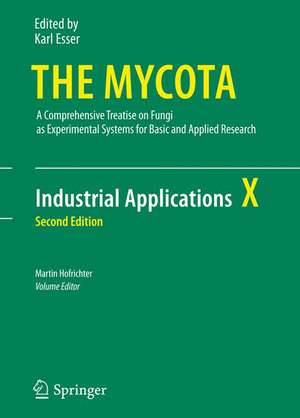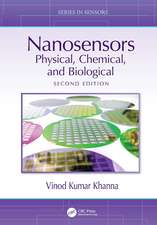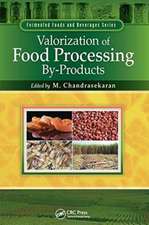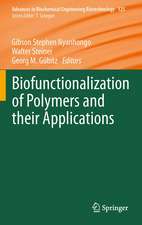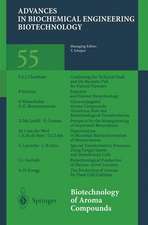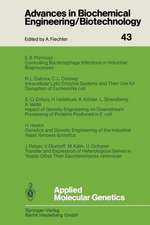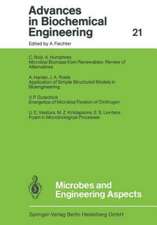Industrial Applications: The Mycota, cartea 10
Editat de Martin Hofrichteren Limba Engleză Hardback – 11 oct 2010
Din seria The Mycota
- 18%
 Preț: 1226.73 lei
Preț: 1226.73 lei - 9%
 Preț: 1111.98 lei
Preț: 1111.98 lei - 24%
 Preț: 1210.68 lei
Preț: 1210.68 lei - 18%
 Preț: 1112.30 lei
Preț: 1112.30 lei - 24%
 Preț: 1617.28 lei
Preț: 1617.28 lei - 18%
 Preț: 2105.92 lei
Preț: 2105.92 lei - 18%
 Preț: 1663.18 lei
Preț: 1663.18 lei - 5%
 Preț: 1920.09 lei
Preț: 1920.09 lei - 24%
 Preț: 1307.89 lei
Preț: 1307.89 lei - 24%
 Preț: 964.62 lei
Preț: 964.62 lei - 24%
 Preț: 1232.66 lei
Preț: 1232.66 lei - 24%
 Preț: 1592.79 lei
Preț: 1592.79 lei - 24%
 Preț: 1385.67 lei
Preț: 1385.67 lei - 18%
 Preț: 1222.49 lei
Preț: 1222.49 lei - 18%
 Preț: 1221.20 lei
Preț: 1221.20 lei - 18%
 Preț: 1244.08 lei
Preț: 1244.08 lei - 15%
 Preț: 641.20 lei
Preț: 641.20 lei - 24%
 Preț: 1048.93 lei
Preț: 1048.93 lei - 18%
 Preț: 950.33 lei
Preț: 950.33 lei - 18%
 Preț: 956.03 lei
Preț: 956.03 lei - 24%
 Preț: 1072.13 lei
Preț: 1072.13 lei
Preț: 2123.28 lei
Preț vechi: 2589.36 lei
-18% Nou
Puncte Express: 3185
Preț estimativ în valută:
406.29€ • 442.71$ • 342.36£
406.29€ • 442.71$ • 342.36£
Carte disponibilă
Livrare economică 02-16 aprilie
Preluare comenzi: 021 569.72.76
Specificații
ISBN-13: 9783642114571
ISBN-10: 3642114571
Pagini: 470
Ilustrații: XXIII, 485 p. 152 illus.
Greutate: 1.43 kg
Ediția:2nd ed. 2011
Editura: Springer Berlin, Heidelberg
Colecția Springer
Seria The Mycota
Locul publicării:Berlin, Heidelberg, Germany
ISBN-10: 3642114571
Pagini: 470
Ilustrații: XXIII, 485 p. 152 illus.
Greutate: 1.43 kg
Ediția:2nd ed. 2011
Editura: Springer Berlin, Heidelberg
Colecția Springer
Seria The Mycota
Locul publicării:Berlin, Heidelberg, Germany
Public țintă
ResearchCuprins
Production of Bread, Cheese and Meat.- Asian Fungal Fermented Food.- Production of Beer and Wine.- Production of Edible Mushrooms.- The β-Lactam Antibiotics: Current Situation and Future Prospects in Manufacture and Therapy.- Non-β-Lactam Antibiotics.- Insecticidal and Nematicidal Metabolites from Fungi.- Immunomodulators.- Ergot Alkaloids.- Production of Organic Acids by Filamentous Fungi.-Production of Vitamin B2 and a Polyunsaturated Fatty Acid by Fungi.- Fungal Flavours.- Industrial Applications of Fungal Enzymes.- Fungal Biotransformations in Pharmaceutical Sciences.-Fungal Biodegradation of Lignocelluloses(Hemi-)cellulose degrading enzymes and their encoding genes from Aspergillus and Trichoderma.- Fungi and their Enzymes for Pitch Control in the Pulp and Paper IndustryBiosorption of Metals.- Bioherbicides.- Genomic approaches for identification of the biopolymer degrading enzyme network of Aspergillus niger.- New Trends in Fungal Biooxidation.- Fungal Soil Bioremediation: Developments Towards Large-Scale Applications.
Recenzii
From the reviews:
" ... very good reference volume, which will prove of value to both mycologists and biotechnolgists." (Mycologist)
"Having found a number of the volumes in this series very useful, I was looking forward to reading vol. 10 covering my particular area of interest. I have to say that I found the contents … varied. All the chapters are readable and informative … ." (J. Kelley, Bibliography of Systematic Mycology, Vol. 11 (5), April, 2003)
"This volume of The Mycota contains 21 chapters reviewing the role of fungi in traditional and more recent biotechnologies. ... On the whole, the highly detailed chapters are amply illustrated with figures and tables and provided with detailed bibliographies, and are well written … . will prove of value to both mycologists and biotechnologists." (Brian Flannigan, Mycologist, Vol. 17 (1), 2003)
"The latest volume in this series provides an overview of both traditional and novel industrial applications of fungi from their role in the production of bread, cheese, fermented foods, beer and wines, to their potential in bioremediation. ... it represents a useful source of information for undergraduates as well as their teachers and researchers. Recommended for purchase by academic libraries." (Vicki Tariq, Microbiology Today, Vol. 29, August, 2002)
From the reviews of the second edition:
“This new book … covers the recent development in the industry of fungal world … . this book is good for those interested in industrial application of fungi … . It is also well referenced and updated so the recent development can be clearly viewed from this book. … should be available in all college and university libraries where courses in plant pathology and biotechnology are offered. It is also useful source of information for undergraduates as well as their teachers and researchers.” (Shova Baral, Fungal Diversity, April, 2012)
" ... very good reference volume, which will prove of value to both mycologists and biotechnolgists." (Mycologist)
"Having found a number of the volumes in this series very useful, I was looking forward to reading vol. 10 covering my particular area of interest. I have to say that I found the contents … varied. All the chapters are readable and informative … ." (J. Kelley, Bibliography of Systematic Mycology, Vol. 11 (5), April, 2003)
"This volume of The Mycota contains 21 chapters reviewing the role of fungi in traditional and more recent biotechnologies. ... On the whole, the highly detailed chapters are amply illustrated with figures and tables and provided with detailed bibliographies, and are well written … . will prove of value to both mycologists and biotechnologists." (Brian Flannigan, Mycologist, Vol. 17 (1), 2003)
"The latest volume in this series provides an overview of both traditional and novel industrial applications of fungi from their role in the production of bread, cheese, fermented foods, beer and wines, to their potential in bioremediation. ... it represents a useful source of information for undergraduates as well as their teachers and researchers. Recommended for purchase by academic libraries." (Vicki Tariq, Microbiology Today, Vol. 29, August, 2002)
From the reviews of the second edition:
“This new book … covers the recent development in the industry of fungal world … . this book is good for those interested in industrial application of fungi … . It is also well referenced and updated so the recent development can be clearly viewed from this book. … should be available in all college and university libraries where courses in plant pathology and biotechnology are offered. It is also useful source of information for undergraduates as well as their teachers and researchers.” (Shova Baral, Fungal Diversity, April, 2012)
Caracteristici
Continues the excellent concept of the first edition by presenting extensively updated and revised chapters on the production of food and beverages, antibiotics, organic acids, vitamins, and industrial enzymes Introduces fresh ideas in the form of new contributions dealing with bioherbicides, novel enzymes, flavors, metabolites, and innovative fungal techniques. Written by experts Richly illustrated Includes supplementary material: sn.pub/extras
